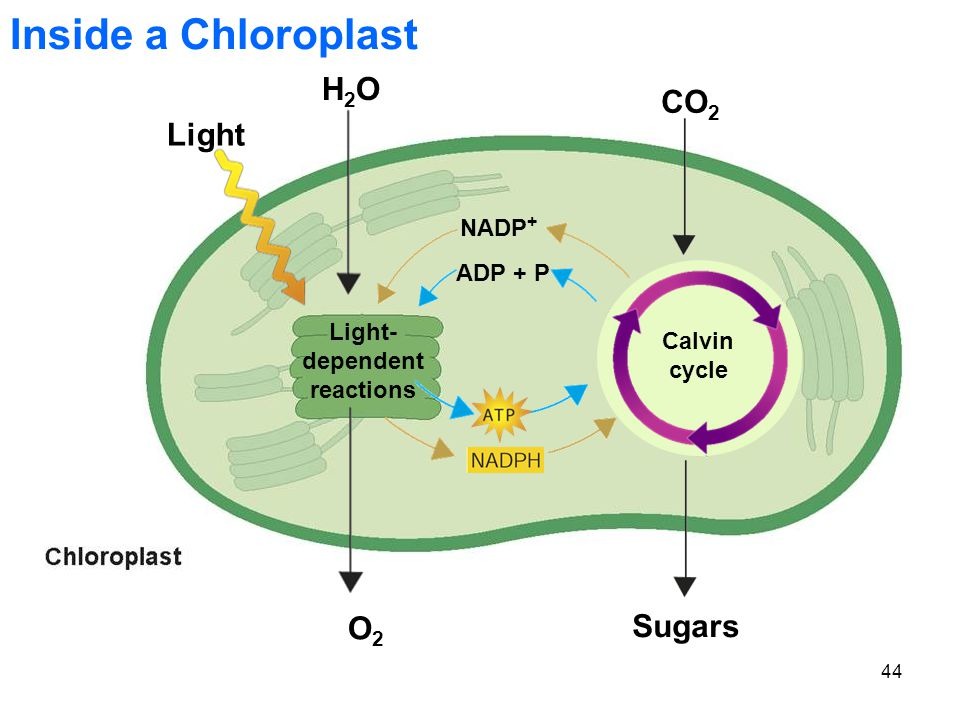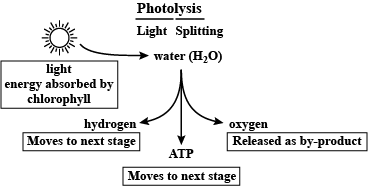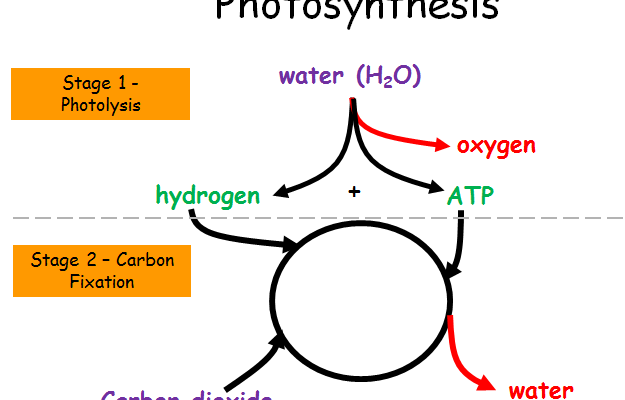All organisms need food to survive. Unlike animals, plants don’t obtain food by eating – they make their own food chemically, using a process called photosynthesis. This is why green plants are called producers in food chains – they make glucose (a simple sugar) from light energy (sunlight), water, and carbon dioxide.
Table of Contents
How photosynthesis works
In photosynthesis, green plants combine carbon dioxide and water to make glucose, which is used as a food source.Oxygen is also produced. Some of it is used by the plant in respiration and the rest is released as a waste product.
Also Check- Factors Which Affect Photosynthesis
3 Major Steps of Photosynthesis
Major Steps that occur during the process of photosynthesis are as follows
1. Absorption
Absorption of light energy by chlorophyll.
2. Conversion
Conversion of light energy into chemical energy and splitting of water molecules into hydrogen and oxygen.Water molecules split in the presence of sunlight to form hydrogen and oxygen. This process is called photolysis of water. Hydrogen ions are used to reduce CO2 and O₂ is given off as a byproduct.
3. Reduction
Reduction of carbon dioxide to carbohydrates.
The above steps need not take place one after the other immediately, e.g. desert plants take up carbon dioxide at night and prepare an intermediate compound. This intermediate compound is acted upon by the energy absorbed during the day by the chlorophyll.
Steps of Photosynthesis in Light Dependent and Light Independent Phase (Calvin Cycle)

Photosynthesis takes place in 2 main phases
- LIGHT-DEPENDENT PHASE
- LIGHT-INDEPENDENT -DARK PHASE(Calvin Cycle)
Also Check – Name the Factors Which Affect Photosynthesis
LIGHT-DEPENDENT PHASE
- In this phase of photosynthesis , light plays the key role.
- A series of chemical reactions occur in very quick succession, initiated by light and therefore, the phase is called the photochemical phase or Light Dependant Phase.
- The light reaction takes place in thylakoids (containing chlorophyll) of the chloroplasts.
2 Important Steps of photosynthesis in the Light-Dependant Phase
The light reaction (photochemical phase) occurs in two main steps.
Step 1 – Activation of chlorophyll
The chlorophyll on exposure to light energy becomes activated by absorbing sunlight.
Step 2- Splitting of water
The absorbed energy is used in splitting the water molecule (H₂O) into its two components (Hydrogen and Oxygen) and releasing electrons. The reaction is known as Photolysis. Photolysis occurs in the grana of a chloroplast and is defined as the splitting of H₂O molecules into hydrogen ions and oxygen in the presence of light.
Products of photolysis

Also Check – What are the Adaptations of leaf for Photosynthesis
- The hydrogen ions (H¹) are picked up by a compound NADP (Nicotinamide adenine dinucleotide phosphate) to form NADPH.
- The oxygen (O) component is given out as molecular oxygen (O₂).
- The electrons (e-) are used in converting ADP (adenosine diphosphate) into energy-rich compound ATP (adenosine triphosphate) by adding one phosphate group P, (inorganic phosphate).
LIGHT-INDEPENDENT– DARK PHASE (Calvin Cycle)
It doesn’t mean that it occurs when it is dark i.e. at night. It only meant that the reactions are not dependent on light. The reactions in this phase do not require light energy, and occur simultaneously with the light reaction (time gap between the two being less than even one-thousandth of a second). it is also called as Calvin Cycle.
Step of LIGHT-INDEPENDENT– DARK PHASE (Calvin Cycle)

1. Conversion of Carbondioxide into sugar
- In this step glucose is made using carbondioxide and energy containing products of the light reaction.
2. Conversion of glucose into starch
- In the light-independent phase Glucose is converted into starch and other chemicals.
- Most green plants convert glucose into starch as soon as it is formed during photosynthesis.
- Several glucose molecules are transformed to produce one molecule of starch; this process is called polymerisation.
- Some plants change glucose to sucrose (cane sugar, which chemically is called disaccharide or double sugar), or some into oils,etc.


13 Comments on “Steps of Photosynthesis”